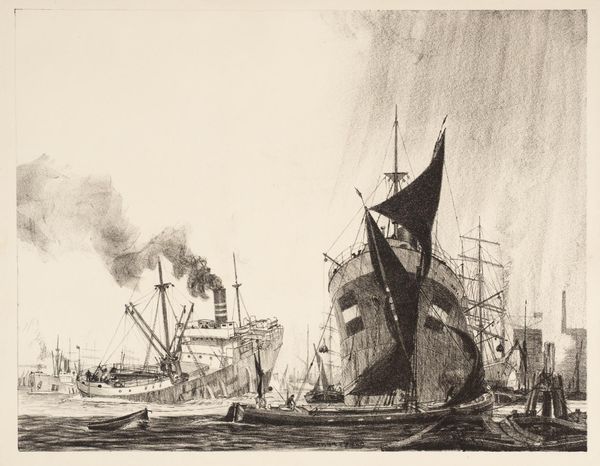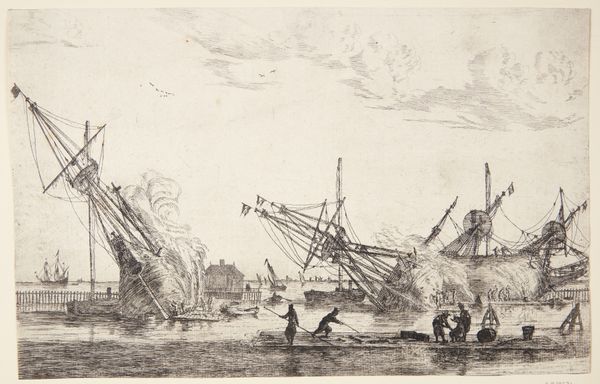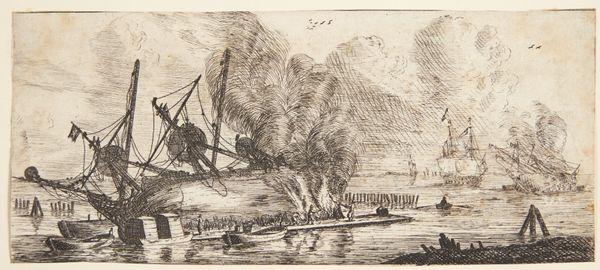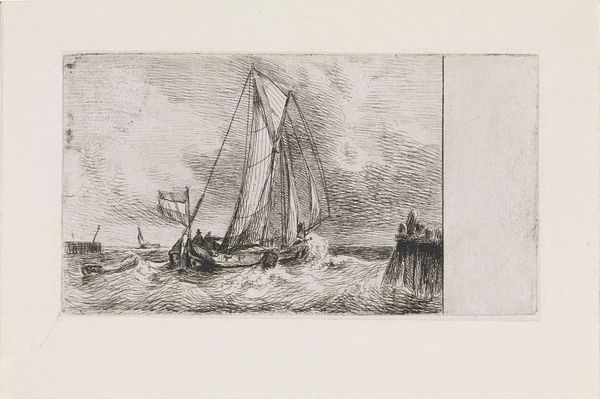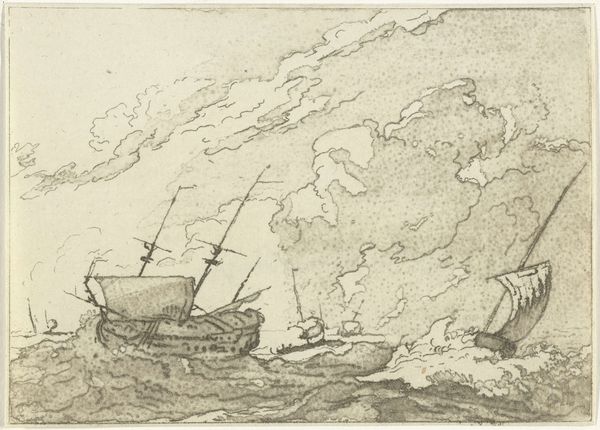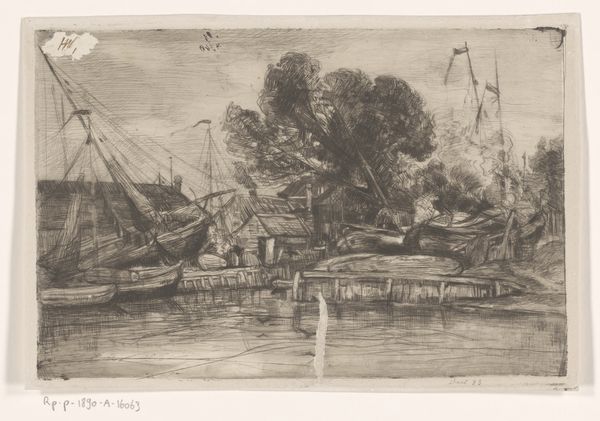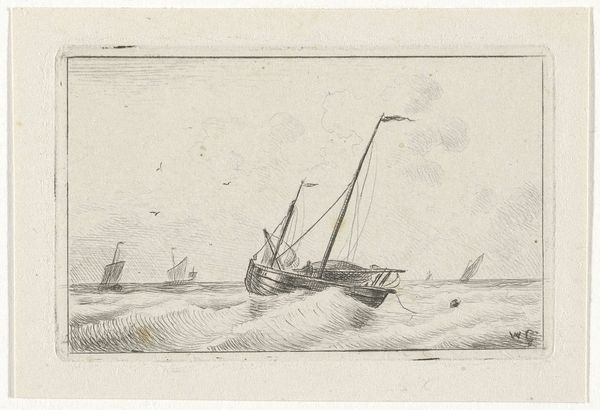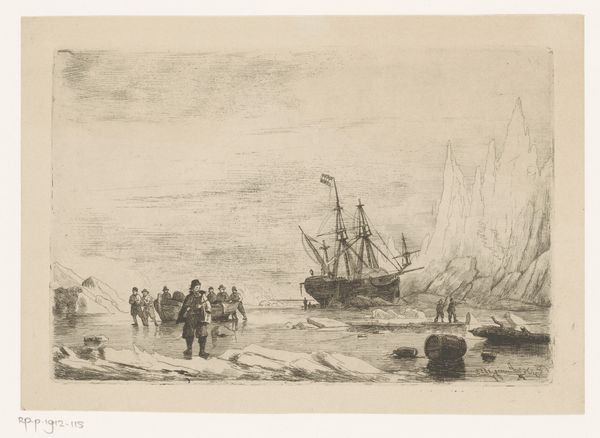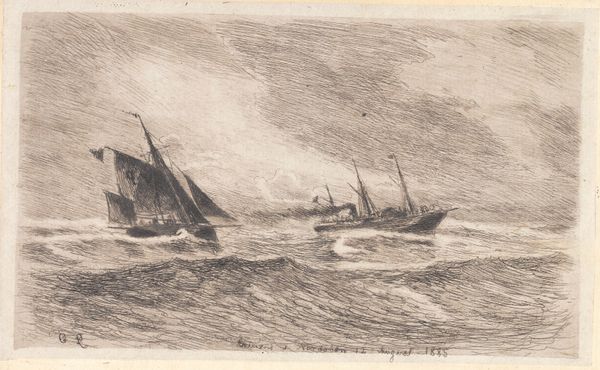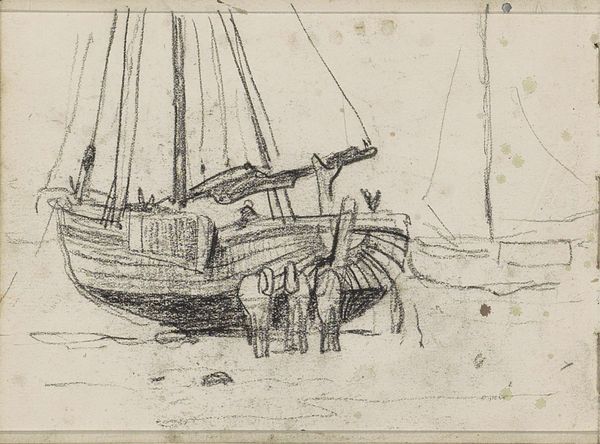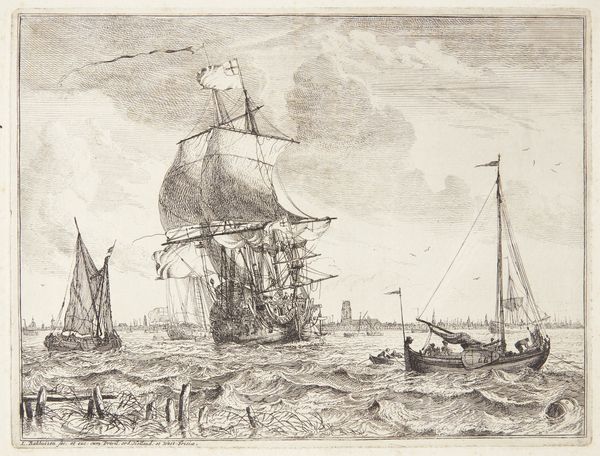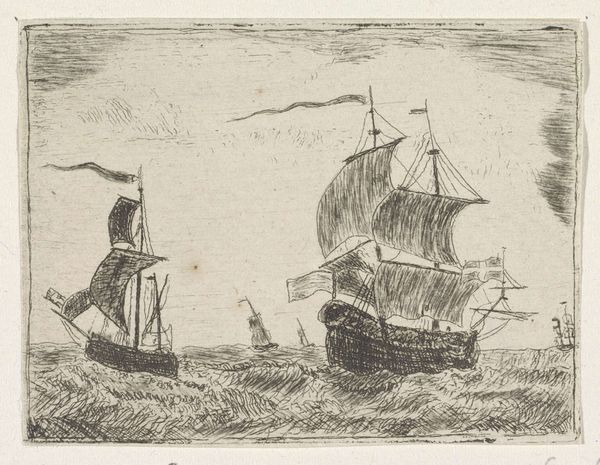
Naval combat, a ship at center, seen from behind, firing at four enemy ships, another ship entering from the right, a rowboat with nine people to left, from 'Peace and War' (Divers desseins tant pour la paix que pour la guerre) 1636 - 1646
0:00
0:00
drawing, print, etching, engraving
#
drawing
#
baroque
#
ship
# print
#
etching
#
war
#
history-painting
#
engraving
Dimensions: Sheet (trimmed to plate): 4 1/16 × 9 15/16 in. (10.3 × 25.2 cm)
Copyright: Public Domain
Curator: Instantly, I'm sucked into the chaos. It's…beautifully violent, a paradox, really. The crisp lines of the etching against this scene of absolute upheaval—smoke, splintering wood, panic... Editor: You’ve keyed in perfectly to the dynamism, the theatrical quality Stefano della Bella brings to this work. This is an etching and engraving, dating roughly from 1636 to 1646. It’s called "Naval combat, a ship at center, seen from behind, firing at four enemy ships, another ship entering from the right, a rowboat with nine people to left, from 'Peace and War'". You can see it on display at the Metropolitan Museum. Curator: "Peace and War"—quite the pairing! The title gives the game away, doesn’t it? It’s all pomp and circumstance. But I see a vulnerability too. Those tiny figures in the rowboat, dwarfed by the inferno. They remind me of ants fleeing a bonfire. Are we meant to glorify this? I feel unease. Editor: The composition pulls us in different directions at once. You have that central ship spewing fire, dominating the scene—very Baroque in its dramatic flair. But your eye then drifts to those smaller vessels, the chaos spreading outwards. Curator: Exactly. And smoke, always such a powerful symbol, here used almost playfully by Bella. Look how it envelops the central vessel and the fleet beyond it; it conceals, it smothers, it leaves so much to the imagination, and for the survivors so little time to escape. A constant reminder, maybe, that war never ends? It's an illusion that rises, billows, and then fades away, revealing more ships, new targets, another reason to fight. Editor: Yes, that's a very insightful observation! The smoke could represent our clouded judgment and how quickly any one group of combatants may hide from itself, that the supposed justice they are performing may lead only to greater ills and misery for their perceived enemy. That our very understanding of any circumstance will be incomplete. Perhaps the row boat you mentioned carries the burden of being an observer to it all. Curator: Makes sense to me. Makes this image even more impressive as a reflection on not only our past but present wars and battles! Thank you for your amazing thoughts, very elucidating. Editor: And you too, for seeing into this work, and for your fascinating view!
Comments
No comments
Be the first to comment and join the conversation on the ultimate creative platform.
